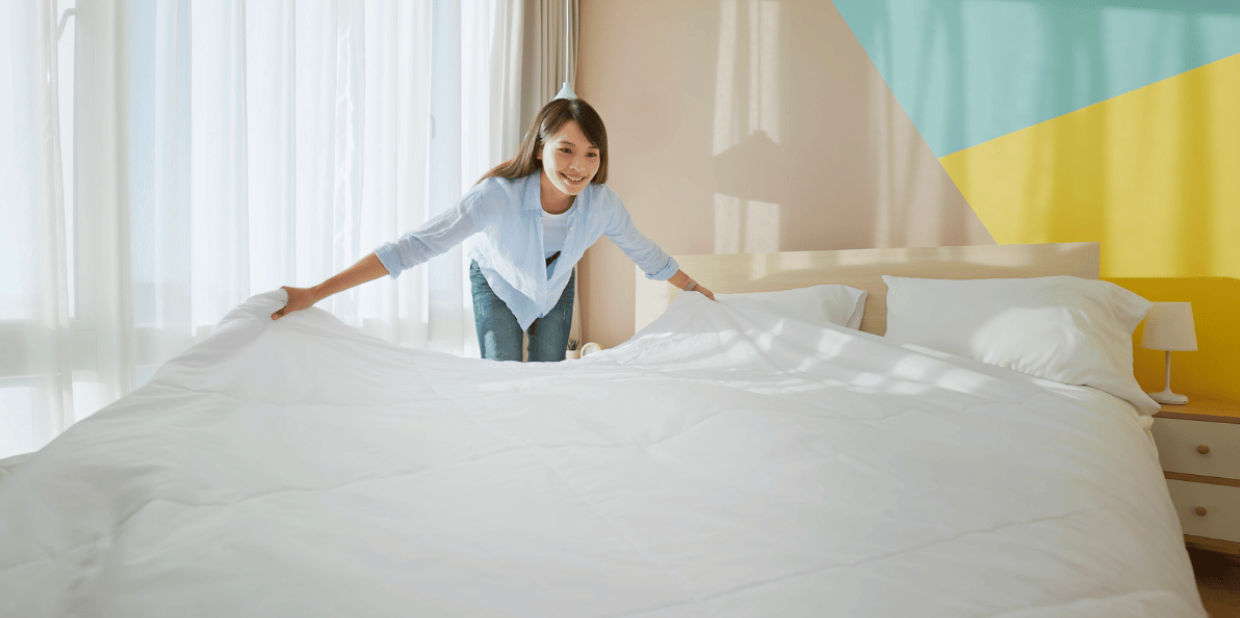
How to Prevent and Get Rid of Bed Bugs
If you’ve been paying attention to the news in recent months, you’ll have heard about the increasing number of bed bug cases in the United States and in other parts of the world. Having nearly eradicated bed bugs back in the 1970s, they’re back in concerning numbers.
Thankfully, there are things you can do to keep your sleeping area free from these pests. And if your home does become infected by bed bugs, then fear not, because there are plenty of things you can do to remedy the problem. In this post, we’re going to take a closer look at preventing bed bugs in the first place, as well as outlining how to get rid of bed bugs if you find them in your home.
Learn the Signs
It’s much easier to get rid of a few bed bugs than to get rid of hundreds. One of the main problems with bed bugs is that they’re so small, which means you could have a full infestation even if you haven’t seen a bed bug in your bedroom. Those pesky bugs do leave evidence of their presence, however. If you notice one or more of the signs, then it’s best to take action as soon as possible. The earlier you begin treatment, the more effective and less expensive it will be.
Some of the telltale signs that bed bugs are in your home include:
- Waking up with itchy bites on your body. Pay particular attention if bites present themselves in a zigzag line of three.
- Rust on bedsheets. Bed bugs leave reddish marks when they drip blood or get crushed.
- Black marks around the bed. Bed bug excrement leaves a black, circular mark, like a dot made by a marker pen.
Identifying Bed Bugs
Knowing what a bed bug looks like can help infestations from becoming too severe, especially if you’re traveling and see what you suspect may be a bed bug in your luggage after staying in a hotel. Bed bugs are small, but they’re not invisible. They’re around 5 mm long, with a red, round, flat body. Keep in mind that baby bed bugs are even smaller (around 2 mm) and appear translucent.
Finding a single bed bug is a cause for concern, but it’s not necessarily a disaster. Just make sure to closely inspect your bedroom for any evidence of other bed bugs.
Beware of Second-Hand Items
Bed bugs are some of the best hitchhikers in the world. They often find their way to people’s homes by hitchhiking on an item of clothing, in furniture, or in books. You’d have to be especially unlucky to bring a bed bug home when you’ve bought a new product, but be wary of second-hand items. That nice chair you bought second-hand may have come from a home that has bed bugs.
If possible, commit to deeply cleaning any second-hand items before bringing them into your home. Washing your vintage clothes may be a little annoying, but it’ll be nowhere near as disruptive as living with bed bugs.
Traveling
It’s nice to stay in a hotel, but keep in mind that you’ll be sleeping in a bed that many people have slept on before, and that increases the possibility of bed bugs significantly. In fact, most people who get bed bugs do so from a hotel or hostel they stay in when traveling.
It’s recommended to check the edges of the bed for any bugs or signs of bugs (rust, black marks) when you first arrive at your hotel. If you want to be extra cautious, then ask the hotel what their bed bug policy is. Some hotels pay huge sums of money to keep their establishments bed bug-free, while others take no action at all. It’s also advisable to leave your luggage bags on an upper shelf in the wardrobe; it’ll make it more difficult for bed bugs to find their way into your bags and ultimately your home.
Regular Vacuuming
First up, let’s clarify one point — bed bugs aren’t attracted to dirty spaces. They’ll go anywhere where they can feed on blood. However, that doesn’t mean that maintaining a clean sleeping environment won’t have an impact. Bed bugs are no match for a vacuum, so even if you can’t see them, vacuuming the area around your bed can help sweep up any bugs that may be lurking around.
Remember that vacuuming alone won’t get rid of bed bugs. They’re smart bugs, and will easily find their way out of the bag if they have a chance. Once you’ve vacuumed, empty out the bag and dispose of the contents.
Clean Your Bedding
Bed bugs like to remain close to their host. In most cases, that means living on or near the bed. If you’re in a battle with bed bugs, then be sure to clean your bedding regularly. Keep in mind that it’s not the water of the washing process that kills bed bugs, but the heat of the dryer. Put your bedding in a dryer on high heat for thirty minutes or more, and any bed bug that is on your bedding will die. Note that air drying your bedding outside won’t be effective unless it’s extremely hot where you live.
Encase the Mattress
Encasing the mattress in a protective cover is a highly effective way to handle bed bugs. If you see a bed bug living in the crevice of your mattress, then invest in a bed bug cover. They’re airtight, so the bed bugs will have nowhere to go. You’ll need to keep the cover on for around 18 months to be sure that any bed bugs have died. Bed bugs can go a long time without feeding, and if you take off the cover too early, then they’ll just get back to feeding on you like nothing has happened.
If you’re inheriting a mattress from a friend or family member, then it can be wise to encase the mattress even if you have no strong reason to believe that it has bed bugs. It’ll give you peace of mind that your mattress is fully clean.
Steam Cleaning
As we mentioned above, bed bugs hate heat. In fact, heat treatment is known for being the best bed bug treatment solution. If you’re trying to get rid of bed bugs, then consider investing in a handheld steam cleaner. They’re cheap and highly effective. Simply let the steam heat up, then clean any area where you suspect there may be bed bugs. It’ll kill them on contact within a couple of seconds.
While steam cleaning can’t get rid of intense infestations, it can provide some peace of mind that you’ll be limiting the number of bed bugs in your home.
Keep The Space Clutter-Free
Minimizing the amount of hiding space in your room can help you to stay in control of your bed bug problem. Cluttered bedrooms provide a lot of space for bed bugs to call home, which means you’ll never really know if you’ve got rid of them once and for all. If possible, look at maintaining a minimalist bedroom. That means that you can clearly view all parts of the room. Plus, aside from helping in your battle with bed bugs, this can just lead to a more generally relaxing sleeping environment.
Invest in Diatomaceous Earth
Diatomaceous earth has been shown to be highly effective at killing bed bugs. It comes in powder form, which you can place around the edges of your bed or anywhere that you suspect may house bed bugs. If the bugs come into contact with diatomaceous earth, the sharp edges of the chemical will slice the bed bug’s body open, causing it to dry out. If, for whatever reason, you don’t want to use a professional bed bug removalist, then diatomaceous earth will be your best chance of success. Don’t bother using bed bug bombs; studies have shown that those products are highly ineffective at killing bed bugs.
Sleep in Your Bed
We know, we know — the prospect of sleeping in a bed bug-infested bed probably doesn’t sound all that appealing. In fact, it probably sounds awful. However, it’s recommended that you do so. Sleeping on the couch may look tempting, but all that’ll happen is that the bed bugs will make their way to the couch, which means you’ll have to eradicate bed bugs from multiple spaces. It’ll be much better if you can keep them contained to just a single room.
Hiring Professionals
Bed bugs are famously difficult to get rid of. While it’s possible to DIY the removal, in most cases it’s best to work with a professional. They’ll have access to more sophisticated products than what you can find in the stores, and they usually offer a guarantee, even if it means visiting more than once.
